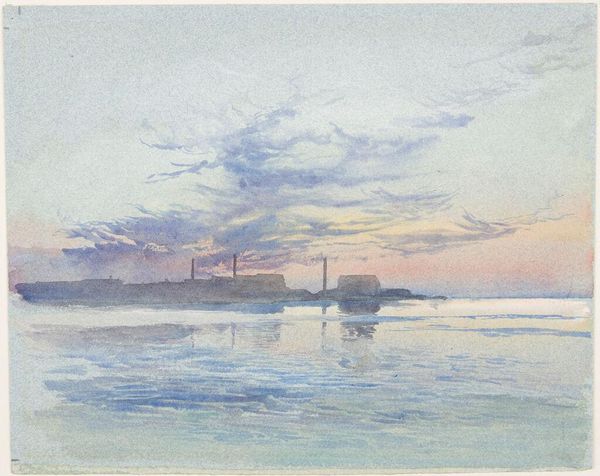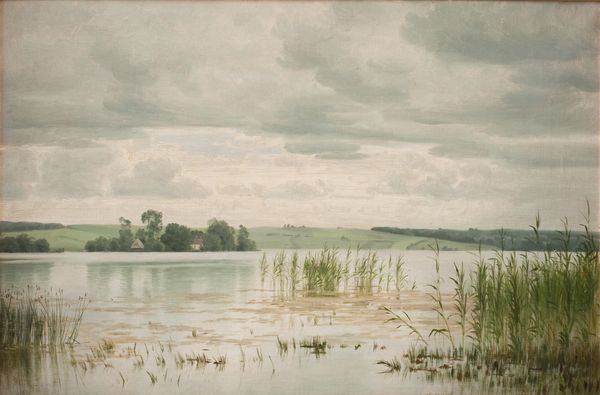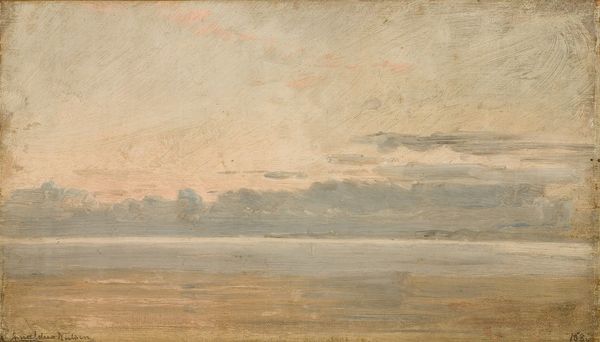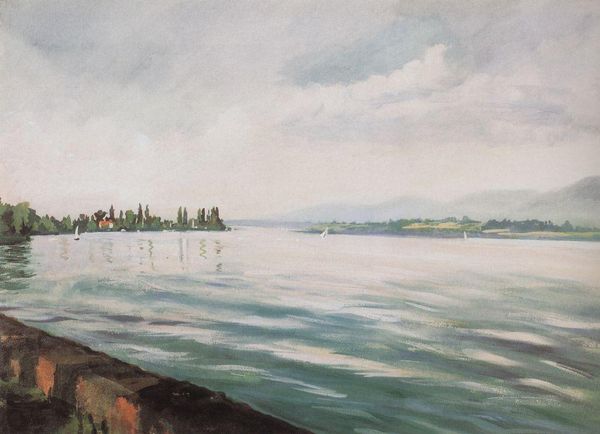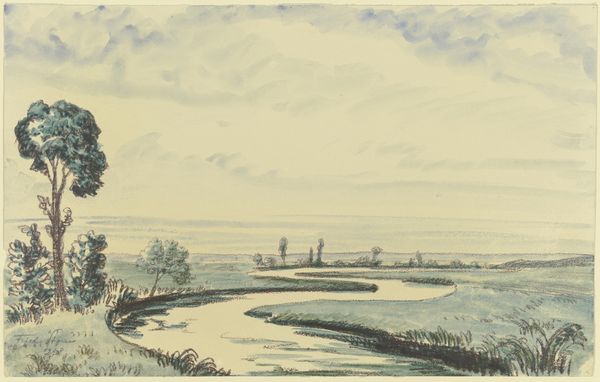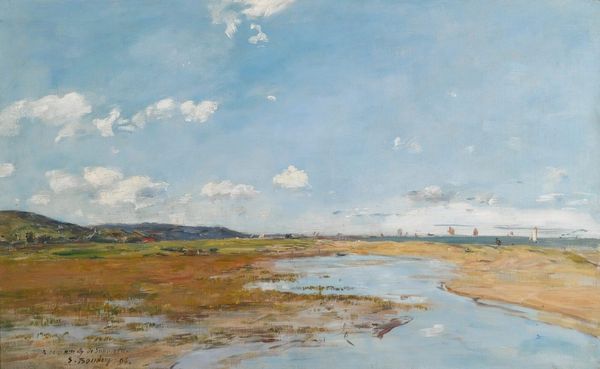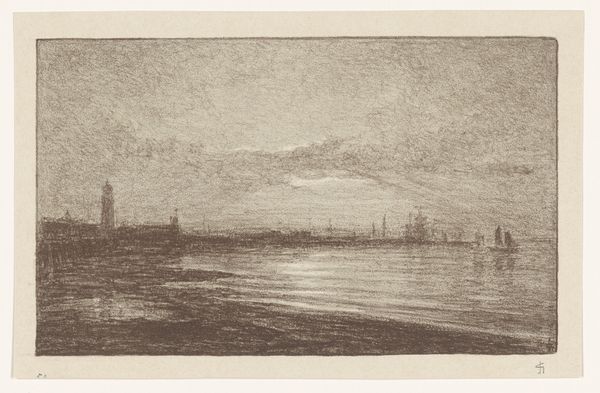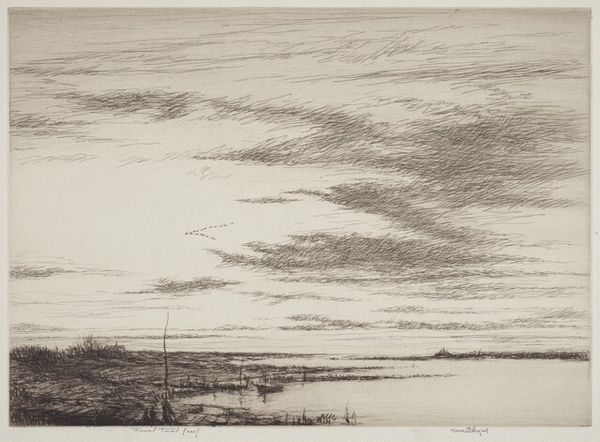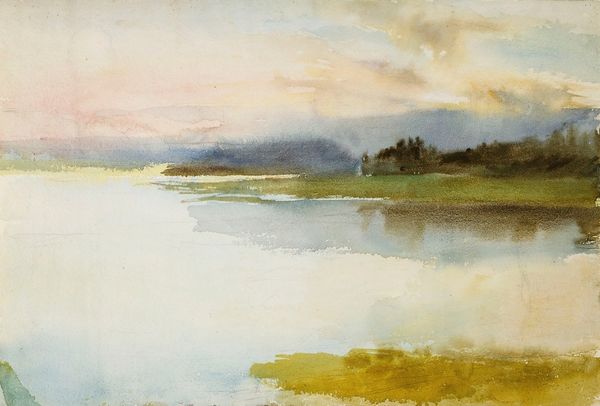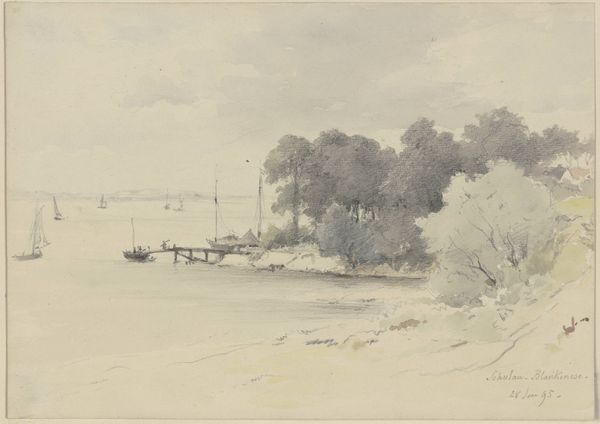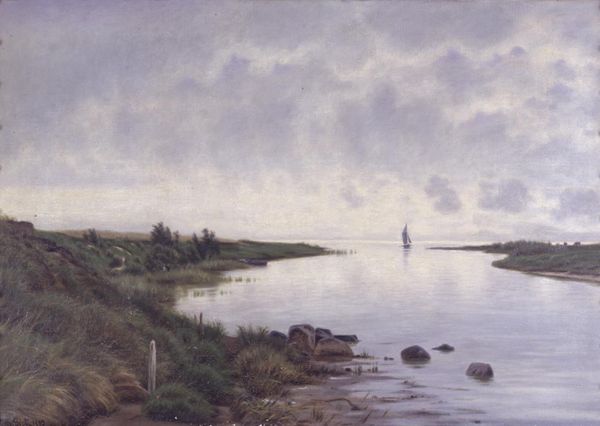
drawing, print, gouache, plein-air, paper, watercolor, graphite
#
drawing
#
water colours
# print
#
gouache
#
plein-air
#
landscape
#
paper
#
watercolor
#
water
#
united-states
#
graphite
#
watercolor
#
realism
Dimensions: 369 × 523 mm
Copyright: Public Domain
Curator: Welcome. We’re standing before Alfred Thompson Bricher's "Reflected Reeds," a watercolor, gouache, and graphite work on paper created around 1875. It resides here at The Art Institute of Chicago. Editor: First impression? Ethereal melancholy. It's like looking at a memory fading in the mist, you know? Soft edges, a muted palette… it evokes this real sense of quietude. I could almost hear the water lapping. Curator: Absolutely. Bricher was very much a painter of mood, wasn’t he? During his time, landscape painting wasn’t just about documenting scenery, but expressing a spiritual or emotional state. And he certainly captured a particularly subtle atmosphere. It aligns with the broader shift in the art world that increasingly focused on intimate scenes of nature and a move towards emotional experience of place. Editor: It's a remarkably still scene, especially when you consider it's nature, which is inherently dynamic. But there’s something comforting in that stillness. It invites you to pause. And for the mid 1870s, after all that tumult from the Civil War, it seems appropriate to see tranquility valued this way. It is also hard to ignore those gorgeous muted greens. Bricher really nailed the particular look of these reeds along a shore. Curator: The realism is interesting, particularly given the emotional content. The composition itself is a bit unconventional, pushing the horizon line higher than you often see. It emphasizes the sky, imbuing it with psychological weight. How do you feel that contributes to the piece as a whole? Editor: It works to create a weightlessness in that the color palette of water and sky are so alike, but that somber tone is ever-present, so it makes you sit and dwell a bit. Perhaps with some pleasant and not-so-pleasant memories, too. You begin to sense a depth beyond the purely representational. This goes past being just an image; this is more an offering of solitude and feeling. It's a wonderful slice of reflective peace. Curator: Yes, Bricher's ability to evoke such a feeling really speaks to how he understood the symbolic language of landscape, so that even a seemingly simple scene like this speaks volumes. Editor: In essence, you’re completely transported by what on the surface appears as simplicity, which I guess sums up this artist’s quiet yet remarkable power.
Comments
No comments
Be the first to comment and join the conversation on the ultimate creative platform.
